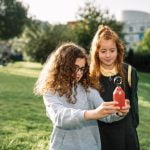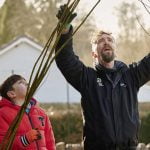Changing the mindset on outdoor learning experiences
Matt Robinson, our Training and Development Officer, gives his opinion on the Department for Education’s recent guidance on educational visits.
Outdoor learning is a phrase that covers so many wonderful learning experiences; from daily play in the nursery yard, through to maths lessons in the school grounds, forest schools, residential programmes, adventurous activities and even foreign expeditions.
It’s a varied set of tools we can choose from as educators to motivate and engage learners, provide real world context for topics and develop character.
Our approach in education has to be one of considered risk taking. We must ensure the learning experiences are both broad and progressive. This a different approach to more common Health and Safety management in other industries.
Yet, because of the breadth of outdoor learning, it is hard to provide balanced guidance and support to ensure that the paperwork and risk management is appropriate.
Here at Learning through Landscapes (LtL), we therefore welcome the new guidance on educational visits from the Department for Education (DfE) that was published in December 2018. This new policy is in line with that set out by the Health and Safety Executive, the Outdoor Education Advisors Panel (OEAP) ‘National Guidance’ and Scottish Advisory Panel for Outdoor Educations (SAPOE) ‘Going Out There’.
This guidance makes it clear that many of our outdoor learning experiences are ‘routine visits’. It is clear that these trips feature ‘everyday level of risks’: slips, trips and crossing roads around other public buildings such as libraries or museums.
This reflects a real change in mindset for many schools and nurseries.
The main change is to see places our children inhabit daily – such as school playground or local parks – as being places our children should be out and about in as part of their learning. This opens up safer green spaces that right are on our doorstep, yet rarely accessed by schools currently; from local parks to hotel grounds.
One positive side effect of this is to introduce our learners to their community and equip them with the risk judgement and skills needed to navigate the physical and social environment. This will better prepare them to walk safely to school, to know where their local parks are and to navigate their way around community resources.
Why is this crucial? In understanding these venues, they will also develop care for them.
This policy also paves the way for a far more proportional approach to permissions and paperwork. This means a move to annual parental permissions and paperwork such as risk assessments.
This move away from overburdening paperwork frees up time to really focus on the culture and behaviour of staff and pupils. As a result, school trips both happen and run safely and smoothly.
This cultural change is key. It will involve staff, children and parents in learning about managing risks for themselves instead of delegating personal responsibility to a school.
For schools and nurseries, it may be time to consider how they could benefit from changing procedures and protocols. Crucially, this should always be done in collaboration with those in the organisation who set policy. The core aim should be to balance the appropriate level of care with the opportunities for improving the learning using the outdoors and real world environments.
If you would like advice or training on how to implement this approach, you can speak to us at Learning through Landscapes on 01786 465 934.








